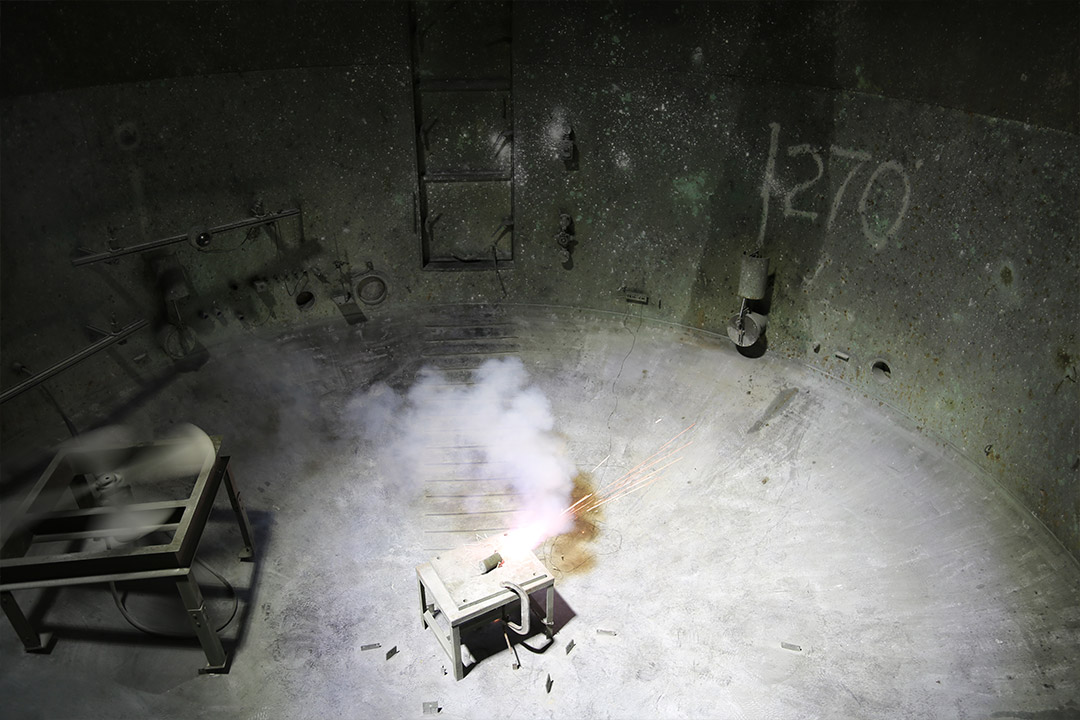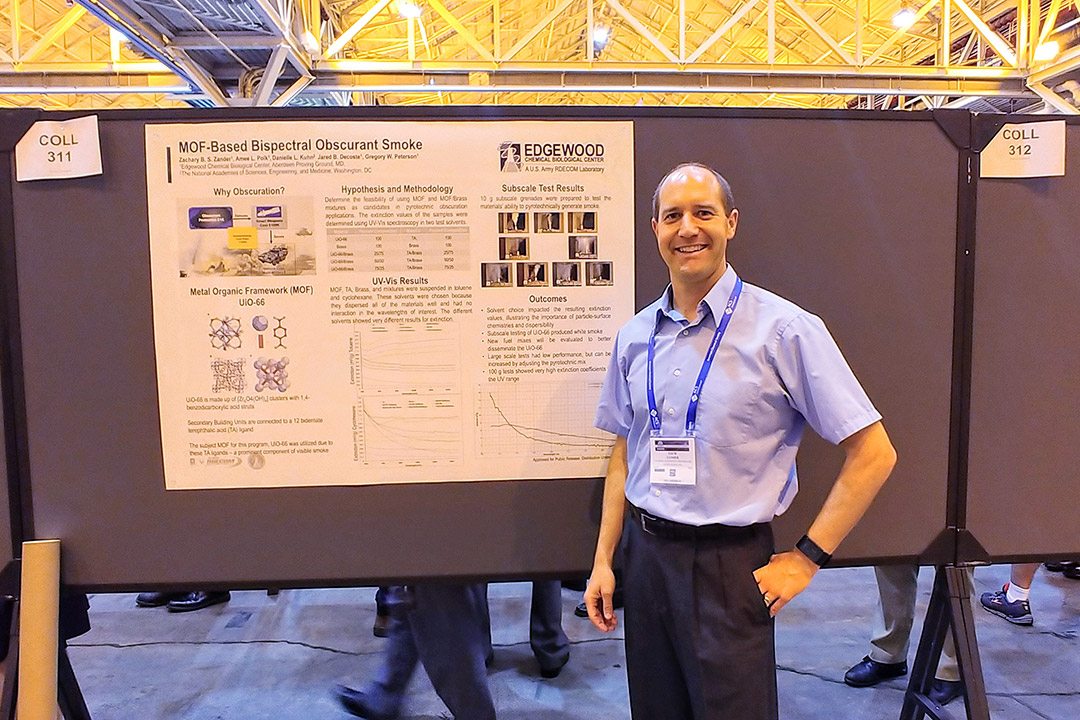// NEWS RELEASE
ECBC Scientist Presents a Better Smoke Bomb at American Chemical Society’s Annual Meeting
CCDC Chemical Biological Center Public Affairs | June 5th, 2018
ECBC Scientist Presents a Better Smoke Bomb at American Chemical Society’s Annual Meeting
DEVCOM CBC Public AffairsJune 5th, 2018

A smoke grenade containing metal organic frameworks designed to block infrared light being tested in an ECBC test chamber.
On the battlefield, the enemy can’t hit what it can’t see. But as sensor technology evolves and improves, increasingly the enemy sees American warfighters well beyond the visible light spectrum. The job of Edgewood Chemical Biological Center (ECBC) scientist Zachary Zander and his research team is to block those other parts of the electro-magnetic spectrum from view, too.
This is the challenge that Zander presented in a poster at the 255th annual meeting of the American Chemical Society in New Orleans on March 18. It was attended by over 16,600 chemists from all over the world. Zander’s topic was selected because it represented a novel form of research with a high-importance application – warfighter survivability.
“Right now, we have to worry about the infrared light part of the spectrum, but as time goes on, we may have to worry about far infrared, and microwave,” said Zander. “We are working on a single smoke grenade that will block all these parts of spectrum so that the warfighters weight burden can be minimized.”

A promising new development in this research is using metal-organic frameworks, called MOFs, as an ingredient in the smoke mixture. MOFs are nano-constructed materials made of organic struts consisting of oxygen, hydrogen and carbon, and metals acting as nodes, commonly copper, zinc, or zirconium. They form three-dimensional crystalline structures much like an erector set. The lattice-shaped structures have large void spaces, called pores.
One form of MOF ECBC scientists are working with, called UiO-66, is especially promising. It is comprised of terephthalic acid, or TA, linkers connecting the metal nodes. This is significant as terephthalic acid is a major component of the existing visible smoke grenade. While the focus thus far has been UiO-66, MOFs can be customized by changing size and shape, adding more struts and nodes, or by changing the organic material used for the struts, potentially improving infrared light blocking. In addition, other elements such as zinc or copper can be placed inside the MOF’s pores to further add to its infrared blocking ability.
In another twist, different chemical compositions of the MOF could even release colored smoke, which meets another warfighter need, signaling.
“For now, we’re busy experimenting with different temperatures in the pyrotechnic process. We are modifying the temperature of the burn to determine how best to liberate the MOF strut, terephthalic acid. Increasing terephthalic acid liberation increases smoke density and, therefore, the grenade’s visual blocking power,” said Zander. “It’s a delicate balance, burn the MOF too hot and you get soot, water and carbon dioxide; burn it too low and you do not get a good smoke yield.”
For Zander and his team, this means examining the scientific literature on the subject, talking to colleagues at other research laboratories, and conducting more tests in their test chamber where highly sensitive sensors measure the degree of visible and infrared light blockage. For now it is an internally funded seedling project, but its potential for contributing to warfighter survivability is likely to attract significant customer funding in the future.
The U.S. Army Combat Capabilities Development Command (DEVCOM) leads in the discovery, development and delivery of technology-based capabilities to enable Soldiers to win our nation’s wars and come home safely. DEVCOM is a major subordinate command of the U.S. Army Futures Command. The DEVCOM Chemical Biological Center is the Army’s principal research and development center for chemical and biological defense technology, engineering and field operations. The DEVCOM Chemical Biological Center is headquartered at Aberdeen Proving Ground, Maryland.
